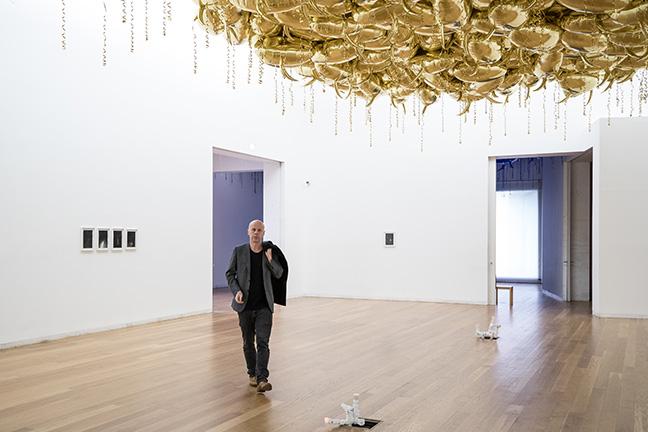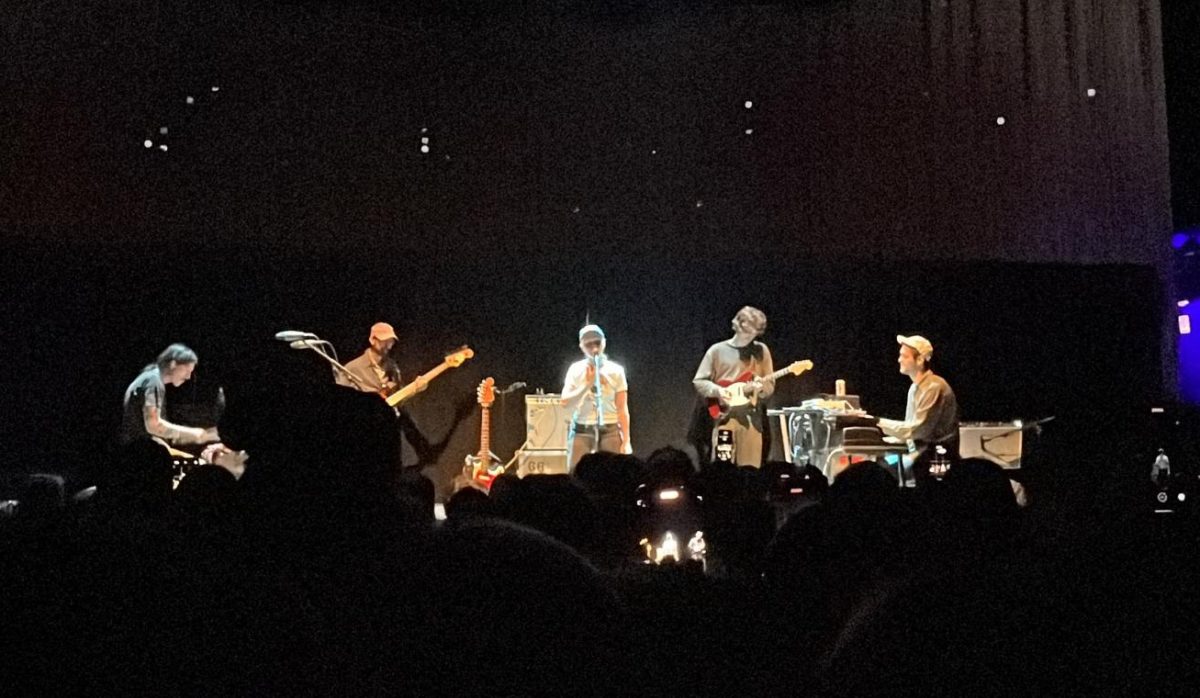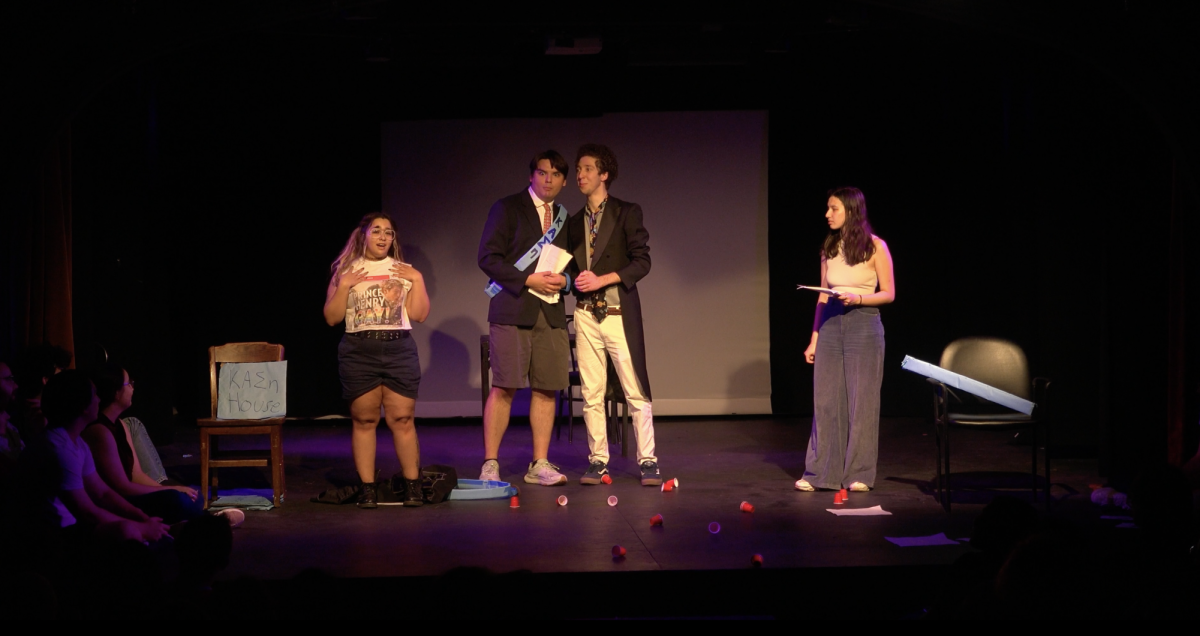Last Monday at the Logan Center, the art history department hosted What Is a Collective?, an event focused on work by Philippe Parreno—a French visual artist primarily known for exhibitions about the concepts of time and reality—in conversation with Ina Blom and Jörn Schafaff. At the event, three of Parreno’s films were screened, with discussions following about his visions for their creation.
The first film, Credits, starts with an image of a bare tree with plastic bags hanging from it. Over time, the colors in the background cycle through variations of lighting and saturation. Soon after, new images began to appear in the background. These images are representative of the progression and degeneration of the place where he grew up. Occasionally, a soundtrack created by Angus Young would start abruptly playing; he explained that growing up, he pretended to be the AC/DC guitarist. The guitar added intensity to the moody and subtle atmosphere of the film to reflect instances of excitement in the dullness of his childhood. Parreno revealed that he created this early film to produce a “souvenir of his past.” For Parreno, it was through the collective experiences created during the monotonous moments of his childhood and the numerous people involved in the film’s production that made this piece of art possible. He strives for a film of the multiple subjectivities that filled his past
The next film, Crowd, is the longest of the three. It starts with a shot of the Earth from space and then zooms in to focus on people’s conversations in tight spaces. Three hundred of the individuals seen in the film were hired extras, their moans and mumbles were choreographed by Parreno though they are presented as spontaneous and natural. The actor’s facial expressions are reactions to images and art on the walls of the set that the audience cannot see. Parreno limits the audience’s perception of what is happening within the film because, as he said, “I don’t like resolved stuff.” In this way, Parreno puts one of his personal philosophies—“Art is not impositional, it is presentational”—into practice.
The third film, June 8, 1968 is Parreno’s film most grounded in a historical moment. The entire film follows a train as it passes by a diverse array of individuals on the side of a road. The title and the subject matter seem to be unrelated. It initially appears as a simple film showing the agglomeration of individuals that make up Parreno’s world until the audience realizes June 8, 1968, is the day Robert F. Kennedy’s body was taken from New York to Washington D.C. The audience’s reaction was striking, as the audience was largely made up of people old enough to remember that event.
The most impactful exchange of the night took place after June 8, 1968. Blom originally explained that the film was shot for a 65 mm screen, which would make the audience the same size as the people on the side of the road. However, Parreno explained that he centered the film in a way that makes the audience in alignment with the train, so that they can identify as the dead passenger being stared at by the onlookers. In this statement, Parreno revealed he not only wished to describe and immerse us in the collective but forced us to reconcile and reflect on what it takes to be part of the collective.







